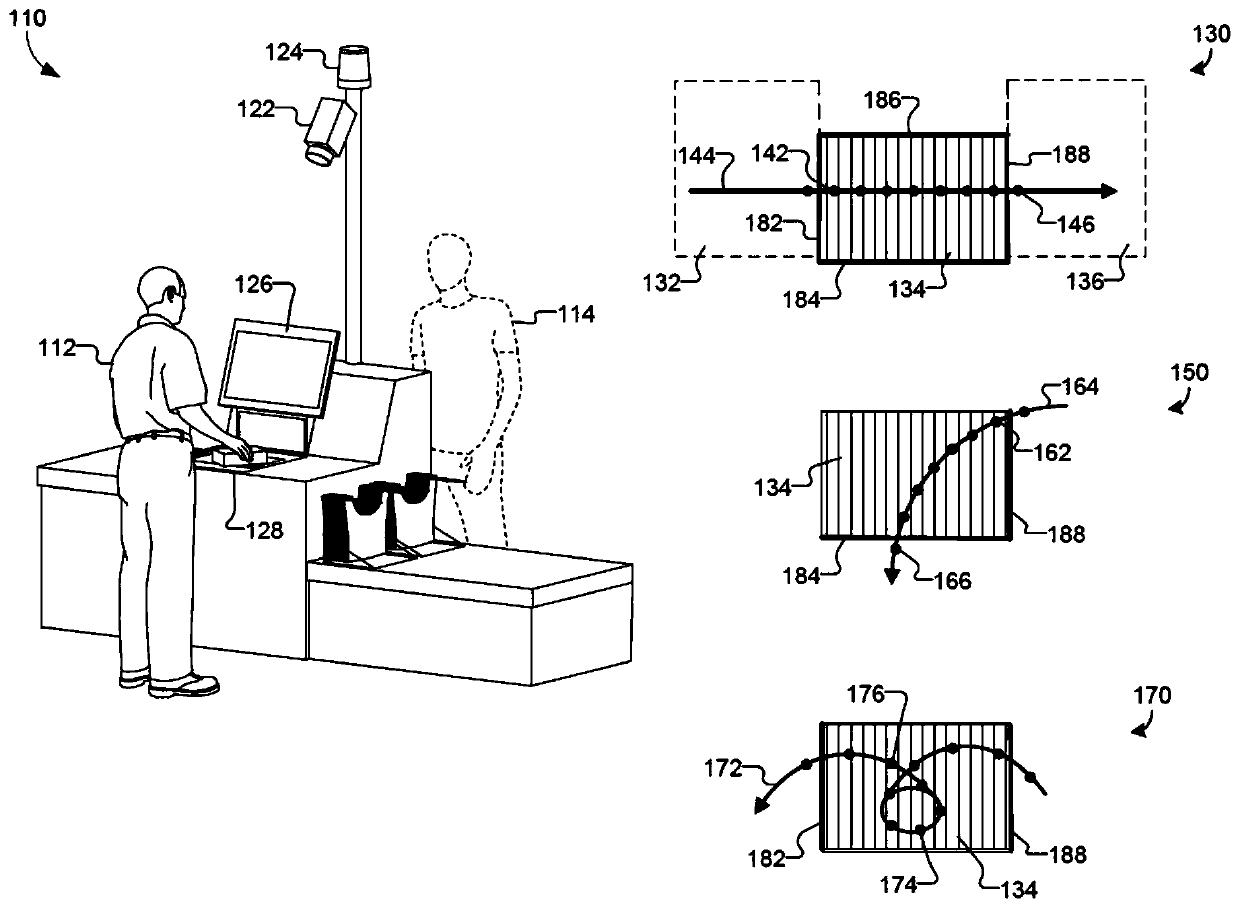Non-standard scanning for retail system
A standard and product technology, applied in the field of detection of non-standard scans, can solve the problems of retailers lacking identification, correcting or displaying non-standard scans, confusing the retail system, and being incorrect
- Summary
- Abstract
- Description
- Claims
- Application Information
AI Technical Summary
Problems solved by technology
Method used
Image
Examples
Embodiment Construction
[0014] The various techniques described herein are described with sufficient specificity to meet statutory requirements. However, the description itself is not intended to limit the scope of the application. Rather, the inventors contemplate that the claimed subject matter may also be embodied in other ways, including different steps or combinations of steps similar to those described herein, in conjunction with other present or future technologies. Furthermore, although the terms "step" and / or "block" may be used herein to imply various elements of a method employed, the terms should not be construed unless and except when the order of the various steps is clearly described No specific order is intended to imply any particular order among the various steps disclosed herein. In addition, the term "based on" generally means that previous content and subsequent content form a technical connection, or that subsequent circumstances are used in performing previous actions.
[001...
PUM
 Login to View More
Login to View More Abstract
Description
Claims
Application Information
 Login to View More
Login to View More - R&D
- Intellectual Property
- Life Sciences
- Materials
- Tech Scout
- Unparalleled Data Quality
- Higher Quality Content
- 60% Fewer Hallucinations
Browse by: Latest US Patents, China's latest patents, Technical Efficacy Thesaurus, Application Domain, Technology Topic, Popular Technical Reports.
© 2025 PatSnap. All rights reserved.Legal|Privacy policy|Modern Slavery Act Transparency Statement|Sitemap|About US| Contact US: help@patsnap.com



